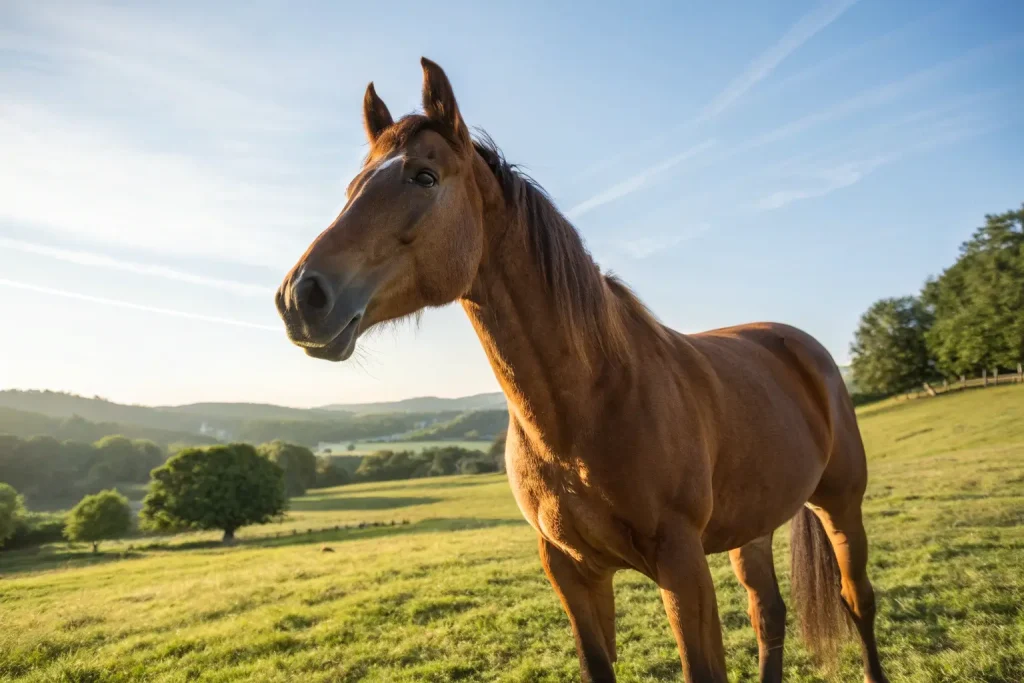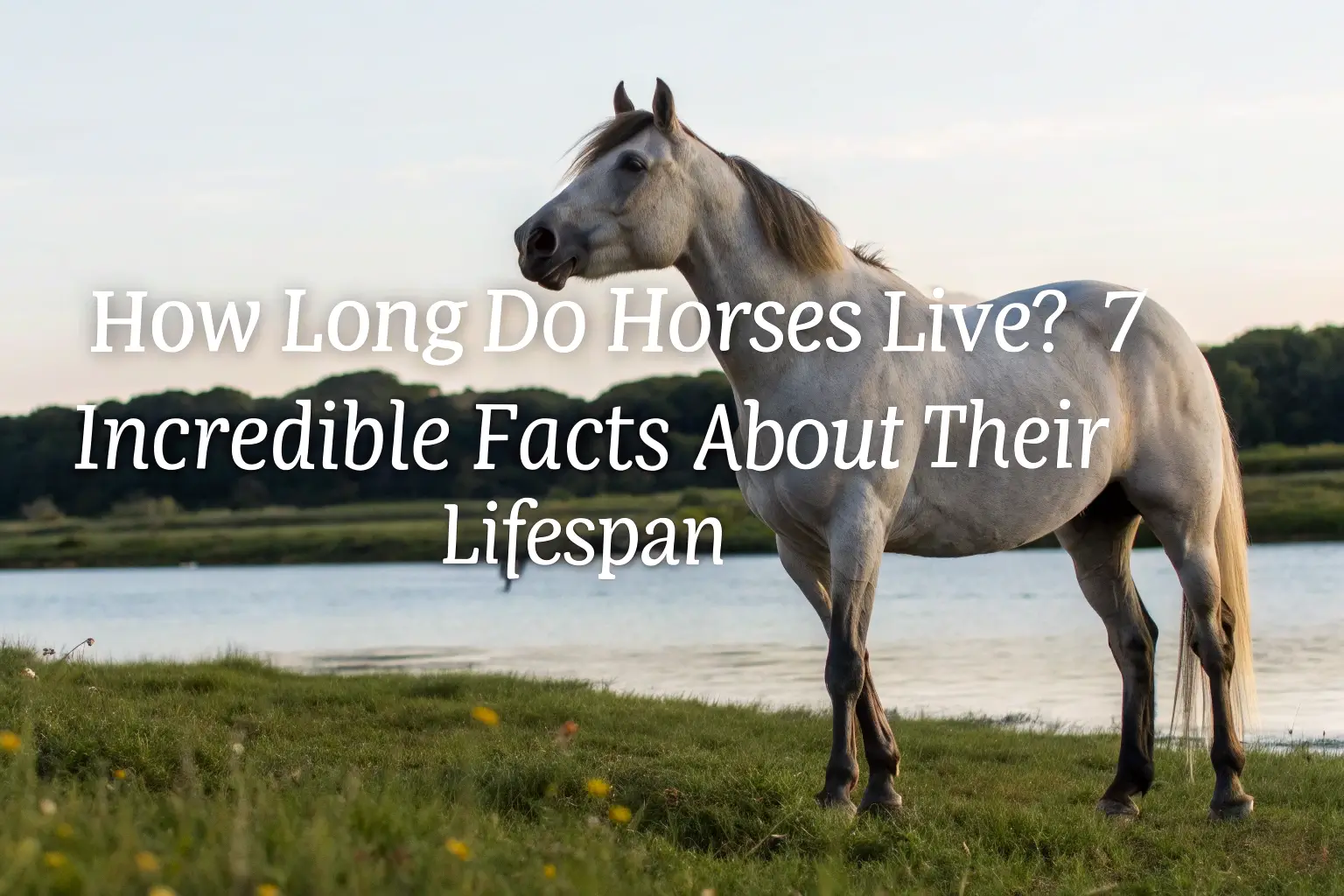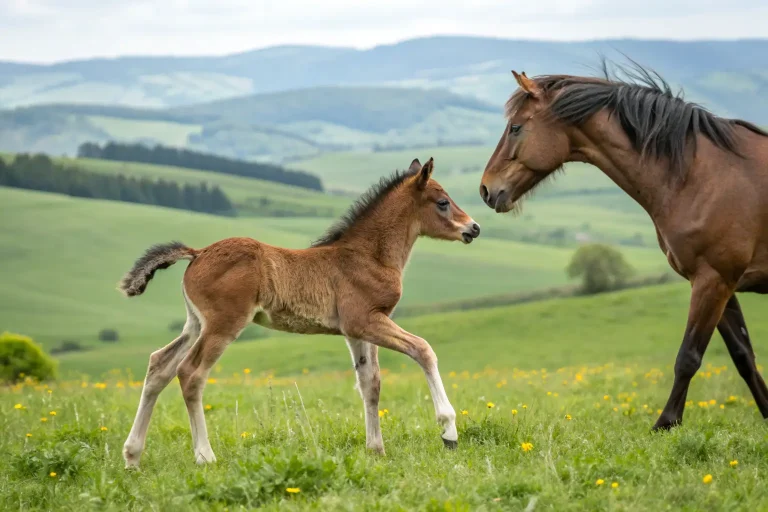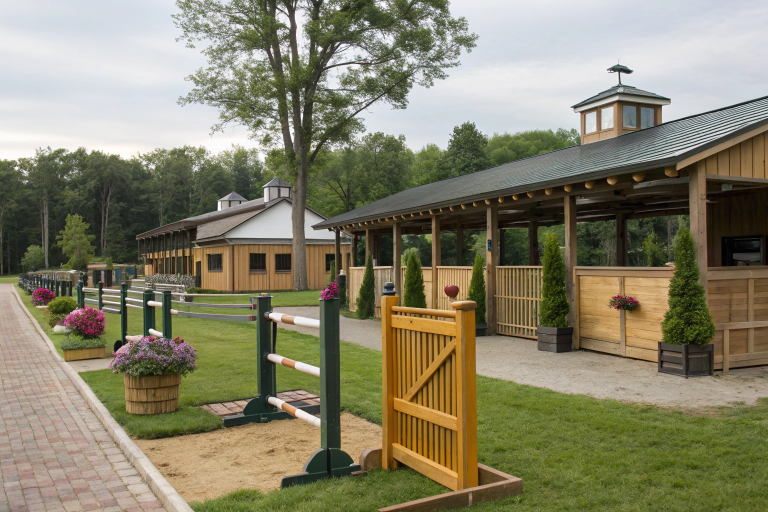How Long Do Horses Live? 7 Incredible Facts About Their Lifespan
Have you ever gazed at a majestic horse galloping across an open field and wondered about their journey through life? Understanding how long horses live isn’t just fascinating—it’s essential knowledge for anyone who admires, works with, or cares for these magnificent creatures. The average horse lifespan typically ranges from 25 to 30 years, but many factors influence this timeline. From ancient warhorses to modern companions, horses have walked alongside humans throughout history, making their longevity relevant to our shared story.
Introduction
Horses stand as living monuments to grace, strength, and resilience. These remarkable mammals have carried humans through history—from ancient battlefields to modern equestrian competitions. Their powerful presence in human civilization makes understanding their lifespan not just interesting, but vital for proper care and appreciation.
While many assume horses live similar lifespans to dogs or cats, the reality is far more complex. Factors ranging from breed genetics to daily care routines can significantly affect how long these majestic animals grace our lives. One horse in history, “Old Billy,” reportedly lived to the astonishing age of 62—demonstrating the extraordinary potential hiding within equine genetics.
Species Overview
Scientific Name: Equus caballus
Physical Characteristics: Horses are large, muscular mammals typically weighing between 900 and 2,000 pounds depending on the breed. Their height, measured at the withers (the ridge between their shoulder blades), ranges from 14 to 17 hands (56-68 inches) for most full-sized breeds. Their bodies feature powerful legs designed for speed and endurance, topped by distinctive flowing manes and tails.
Horses come in various colors including bay, chestnut, black, gray, palomino, and pinto patterns. Their expressive eyes—positioned on the sides of their head to provide nearly 360-degree vision—reveal their intelligence and emotional sensitivity.
Subspecies: While all domestic horses belong to the same species, selective breeding has created over 300 breeds worldwide with specialized traits:
- Draft horses (like Clydesdales and Percherons): Built for power and heavy work
- Light horses (like Arabians and Thoroughbreds): Bred for speed and endurance
- Ponies (like Shetlands and Welsh): Smaller versions under 14.2 hands tall
- Warmblood breeds (like Hanoverians): Developed for specific sporting purposes
Each breed carries genetic predispositions that can affect longevity, with some breeds typically living longer than others.
Natural Horse Lifespan and Distribution
In their natural environment, wild horses like the American Mustang adapt to diverse landscapes—from mountains to plains. Wild horse populations exist across several continents, with notable examples including:
- American Mustangs in western United States
- Brumbies in Australia
- Camargue horses in southern France
- Przewalski’s horses in Mongolia (the only truly wild horses remaining)
When considering how long horses live naturally, it’s interesting to note that wild horses typically have shorter lifespans (15-20 years) compared to their domesticated counterparts due to predation, harsh environmental conditions, and limited veterinary care.
Domestic horses thrive in environments that provide adequate space for movement, protection from extreme weather, and access to clean water and appropriate nutrition. Their adaptations to different climates have allowed them to inhabit nearly every continent except Antarctica.
Diet and Feeding Habits
A horse’s diet dramatically influences how long horses live. As herbivores, they’ve evolved to consume primarily grasses and other fibrous plant materials. Their digestive system features:
- A relatively small stomach designed for continuous grazing rather than large meals
- An extensive large intestine where fiber fermentation occurs
- Specialized cecum that breaks down cellulose with the help of beneficial bacteria
In the wild, horses spend 16-20 hours daily grazing, moving continuously to find fresh vegetation. This natural feeding pattern keeps their digestive systems functioning optimally and helps prevent common health issues like colic and gastric ulcers that can shorten lifespan.
Domestic horses require diets that mimic this natural pattern as closely as possible:
- High-quality forage (hay or pasture) should constitute 1.5-2% of body weight daily
- Concentrates and grains should be limited and fed only when necessary
- Continuous access to clean, fresh water (horses drink 5-10 gallons daily)
- Salt and mineral supplementation appropriate to regional deficiencies
Improper feeding represents one of the most common factors reducing horse longevity, with obesity-related conditions like laminitis potentially cutting years off a horse’s life.
Behavior and Social Structure
Understanding equine behavior provides valuable insights into how long horses live and thrive. In natural settings, horses are herd animals with complex social hierarchies, typically featuring:
- Family bands led by a dominant mare
- Bachelor groups of young or displaced males
- Clear communication through vocalizations, ear positions, and body language
This social structure evolved as protection against predators and supports their overall well-being. Domesticated horses maintain these instincts, which is why isolation often leads to stress-related behaviors and health issues that can reduce lifespan.
The reproductive lifespan of horses varies by sex:
- Mares can reproduce from approximately 18 months to 20+ years, though breeding very young or very old mares increases health risks
- Stallions remain fertile longer, often well into their 20s or even 30s
- Gestation lasts approximately 11 months
- Most mares produce one foal per pregnancy, with twins being rare and often problematic
Interestingly, reproductive status affects longevity, with some studies suggesting geldings (castrated males) typically live longer than both stallions and mares due to reduced hormone-related health issues and behaviors.
7 Incredible Facts About Horse Lifespan

1. Breed Dramatically Affects Longevity
Arabian horses often live significantly longer than other breeds, with many reaching their mid-30s. Their desert heritage has created genetic advantages for longevity. Conversely, larger draft breeds like Percherons and Clydesdales typically have shorter lifespans, rarely exceeding 25-28 years. This inverse relationship between size and longevity mirrors patterns seen across many animal species.
2. The Oldest Horse Lived to 62
While most horses don’t reach their 40s, the record holder for the oldest horse was “Old Billy,” an English barge horse born in 1760 who reportedly lived to 62 years. More recently documented cases include “Shayne,” a Shetland-cross from Essex who lived to 51, and “Orchid,” an Arabian-Thoroughbred cross who reached 50. These exceptional cases demonstrate the remarkable potential longevity horses possess with optimal care and genetics.
3. Modern Veterinary Care Has Extended Average Lifespan
How long horses live today versus historically shows remarkable improvement. In the 1900s, working horses typically lived only 12-15 years due to harsh working conditions and limited veterinary knowledge. Today’s advances in equine medicine—including better parasite control, dental care, and preventive health practices—have nearly doubled the average lifespan to 25-30 years for properly maintained horses.
4. Dental Care Directly Impacts Longevity
A horse’s teeth continue growing throughout their life, but wear unevenly, developing sharp points that can cause pain and difficulty eating. Regular dental floating (filing) every 6-12 months helps ensure horses can properly chew their food. Since malnutrition from poor dentition is a leading cause of decline in elderly horses, proper dental care can add several years to a horse’s life.
5. Ponies Often Outlive Full-Sized Horses
On average, ponies live 5-10 years longer than their larger counterparts. Shetland ponies regularly reach their mid-30s, while Welsh ponies are known for remaining active and healthy well into their late 20s and early 30s. This longevity advantage likely stems from more efficient metabolisms, reduced strain on their smaller frames, and breed-specific genetic factors.
6. Exercise Patterns Affect Lifespan
Horses evolved to move almost constantly, and regular, appropriate exercise contributes significantly to longevity. Studies show horses with consistent, moderate activity throughout life tend to live longer than both sedentary horses and those subjected to intense athletic careers with inadequate recovery periods. The “use it or lose it” principle applies strongly to equine health, particularly regarding joint function and metabolic efficiency.
7. Domesticated Horses Live Longer Than Wild Horses
When comparing how long horses live in captivity versus the wild, the difference is striking. Wild Mustangs typically live 15-20 years, while domesticated horses with proper care routinely reach their late 20s or early 30s. This disparity comes from protection from predators, consistent nutrition, shelter from extreme weather, medical intervention, and reduced competition for resources in domestic settings.
Conservation Status
While domestic horses aren’t endangered, some wild populations face significant challenges:
- Przewalski’s horse: Once extinct in the wild, now listed as “Endangered” on the IUCN Red List following reintroduction efforts
- Wild horse populations in North America and Australia: Often managed through controversial population control methods due to habitat competition with livestock
The greatest threats to wild horse populations include:
- Habitat loss from human development and agriculture
- Climate change affecting water and food availability
- Management conflicts with ranching interests
- Limited genetic diversity in isolated populations
Conservation efforts focus on sustainable management of wild herds while maintaining genetic diversity. These efforts indirectly benefit domestic horses by preserving the genetic heritage that contributes to hardiness and longevity traits.
Tips for Maximizing Your Horse’s Lifespan
Want to help your equine companion reach their golden years? Here are evidence-based practices that help determine how long horses live:
Daily Care Essentials
- Regular exercise: Provide consistent, appropriate activity—daily turnout and light exercise even for retired horses
- Proper nutrition: Feed primarily high-quality forage with minimal concentrates unless needed for work level or health conditions
- Weight management: Maintain optimal body condition score (5 out of 9); obesity significantly reduces lifespan
- Shelter access: Provide protection from extreme weather while allowing natural movement
- Social interaction: Ensure horses have equine companions to satisfy their herd instincts
Preventive Health Measures
- Vaccination schedule: Maintain consistent vaccinations based on regional risks and veterinary recommendations
- Parasite control: Follow a strategic deworming program based on fecal testing rather than calendar-based treatments
- Dental exams: Schedule floating every 6-12 months, more frequently for seniors
- Hoof care: Maintain 4-8 week trimming/shoeing schedule depending on individual needs
- Veterinary check-ups: Conduct wellness exams at least annually, increasing to semi-annually for horses over 20
Senior Horse Considerations
For horses entering their 20s, additional care helps extend quality life:
- Modified feeding program: Consider senior-specific feeds with enhanced digestibility
- More frequent dental checks: Every 6 months minimum as teeth issues accelerate with age
- Joint supplements: Glucosamine, chondroitin, MSM, or hyaluronic acid may help maintain comfort
- Careful monitoring: Watch weight, water intake, and manure production closely
- Adjusted exercise: Continue movement but reduce intensity and duration as needed
Role in the Ecosystem
While domestic horses are primarily companion and working animals, feral horse populations play complex ecological roles that affect their longevity:
- Vegetation management: Grazing prevents brush overgrowth in some environments
- Seed dispersal: Horse manure spreads plant seeds across broad territories
- Soil impact: Hooves aerate soil but can cause erosion in fragile ecosystems
- Prey species: In some regions, horses serve as prey for predators like mountain lions
The absence of natural predators in many environments means feral horse populations require management to prevent overpopulation, which would lead to resource competition and shortened lifespans. Understanding this balance helps inform both conservation efforts and domestic management practices that support optimal equine longevity.
Conclusion
The question “how long do horses live?” yields a fascinating journey through genetics, care practices, and the remarkable bond between humans and equines. While the average domestic horse lifespan falls between 25-30 years, exceptional individuals reach their 40s or beyond. The seven incredible facts we’ve explored reveal how breed, care, environment and even size influence these majestic animals’ journey through time.
As caretakers, we hold tremendous power to influence how long our equine companions remain with us. Through thoughtful daily management, preventive healthcare, and understanding their natural needs, we can help horses not just exist but thrive throughout their lives—from playful foals to dignified seniors.
Whether you’re considering bringing a horse into your life or simply appreciate these magnificent animals from afar, remember that their longevity represents both a gift and a responsibility. By honoring their needs and natural behaviors, we ensure that horses continue their ancient partnership with humanity for generations to come.
Frequently Asked Questions
How long do horses live as pets compared to in the wild?
Domestic horses typically live 25-30 years with proper care, while wild horses generally live 15-20 years. This difference stems from domesticated horses receiving veterinary care, consistent nutrition, and protection from predators. However, wild horses often benefit from constant movement and natural foraging behaviors that support health in ways domestic settings sometimes fail to provide.
Which horse breed lives the longest?
Arabian horses consistently demonstrate superior longevity, with many individuals reaching their mid-30s. Their desert heritage created natural selection for hardiness and efficiency. Ponies, particularly Shetlands and Welsh breeds, also demonstrate exceptional longevity, routinely living into their 30s. Conversely, draft breeds and some warmbloods tend toward shorter lifespans of 20-25 years.
How can you tell a horse’s age?
Young horses can be aged relatively accurately by their teeth eruption pattern until about 5 years old. Beyond that, wear patterns provide rougher estimates through changes like Galvayne’s groove and the shape of the occlusal (chewing) surface. However, modern equine dentists caution that dental aging becomes increasingly inaccurate beyond age 15. For domestic horses, registration papers or microchips provide more reliable age information.
Do female horses live longer than males?
Research suggests geldings (castrated males) typically live longest, followed by mares, with intact stallions having the shortest average lifespan. This pattern likely results from reduced hormone-related health issues and dangerous behaviors in geldings. However, individual care, genetics, and management practices ultimately have greater influence on longevity than sex alone.
What’s the most common cause of death in older horses?
Colic (digestive disturbances) remains the leading cause of death across all age groups, but in elderly horses, complications from equine Cushing’s disease, dental issues leading to malnutrition, and chronic lameness that affects mobility and quality of life become increasingly common. Many senior horses are ultimately euthanized when quality of life deteriorates due to multiple age-related conditions rather than from a single catastrophic issue.
Can a horse live to be 40 years old?
Yes, though it’s uncommon. Approximately 1-2% of horses reach 40, requiring excellent genetics, lifelong proper care, and some luck. Documented cases of horses exceeding 40 are almost exclusively among smaller breeds like Arabians and ponies. When questioning claims of extremely elderly horses, veterinarians look for documentation, as age is frequently overestimated without verification.
How has modern veterinary care changed horse lifespan?
Advances in equine medicine have dramatically extended average lifespans over the past century. Improved parasite control alone has added years to typical longevity, while better understanding of nutrition, dental care, and preventive medicine continues to push the boundaries of how long horses live. Perhaps most significantly, management of conditions like equine Cushing’s disease and metabolic syndrome now allows affected horses to maintain good quality of life for years after diagnosis, whereas previously these conditions led to rapid decline.







